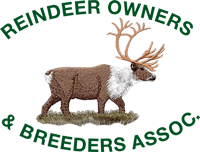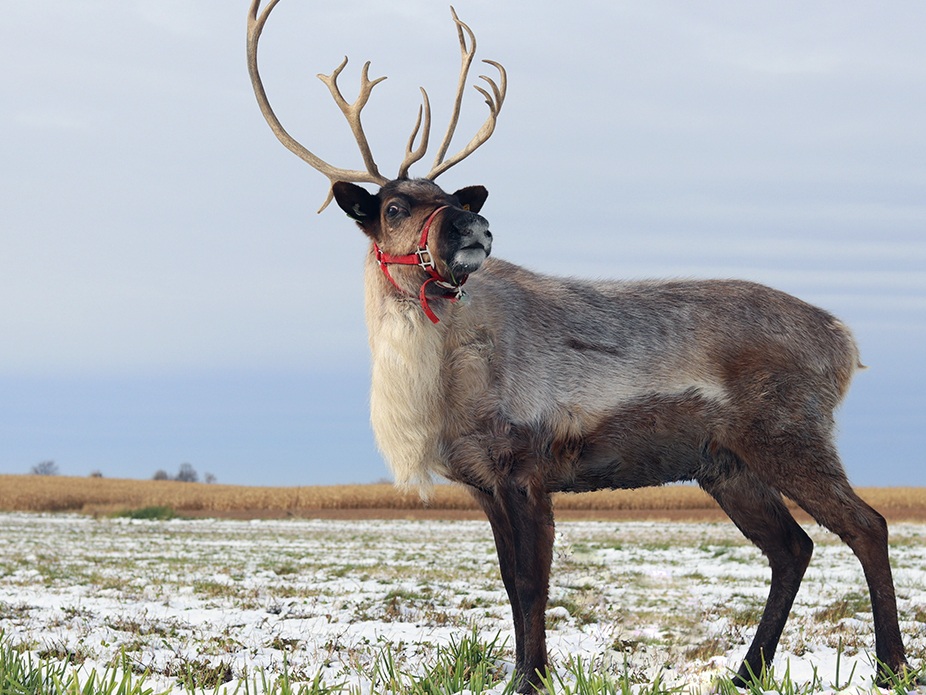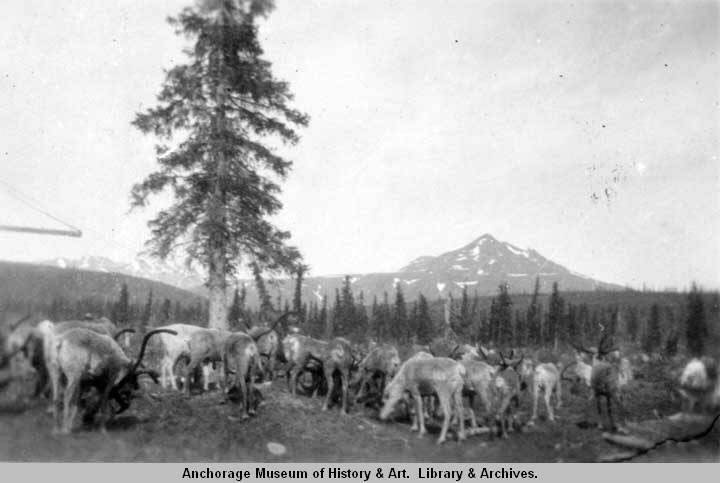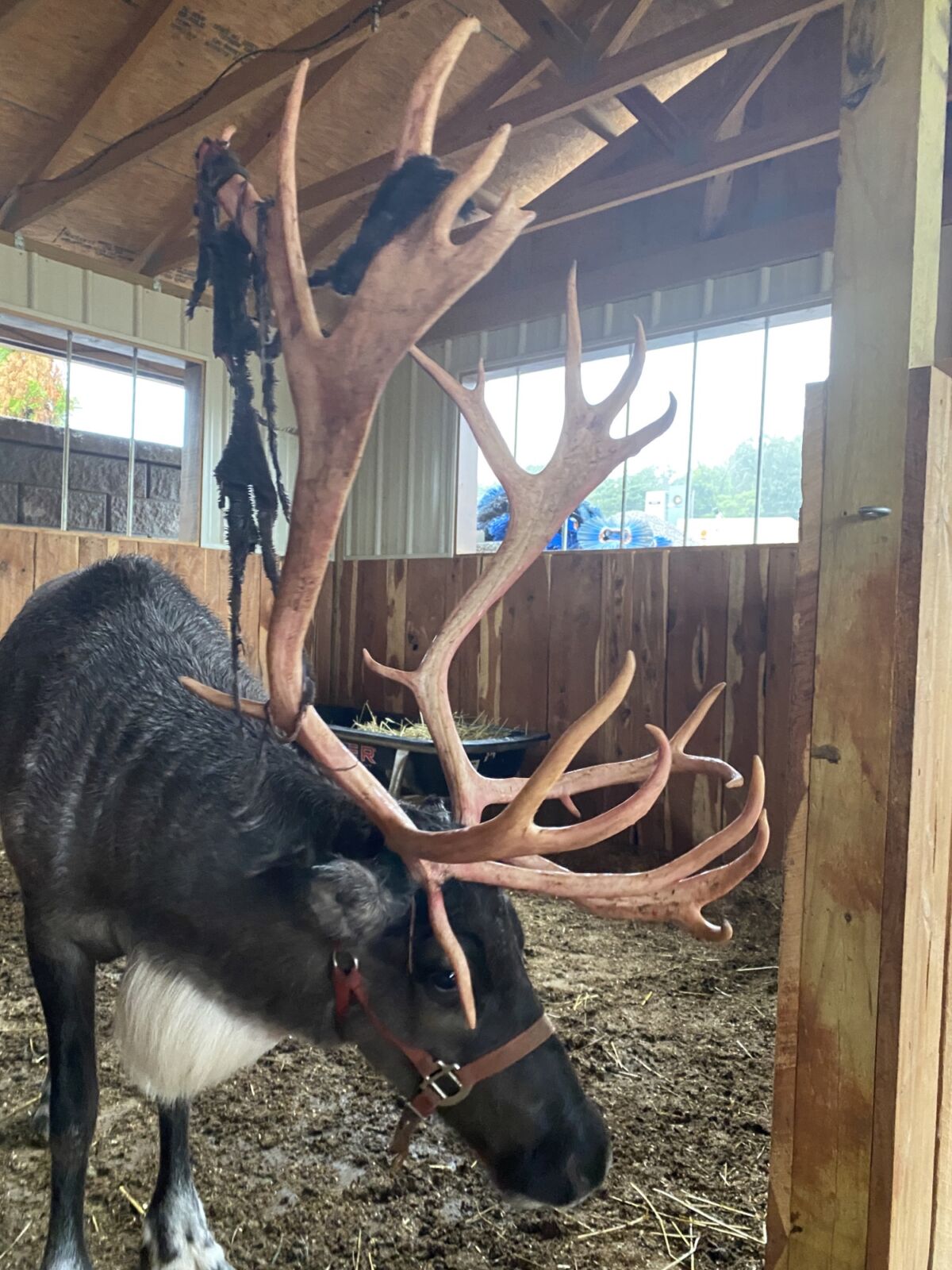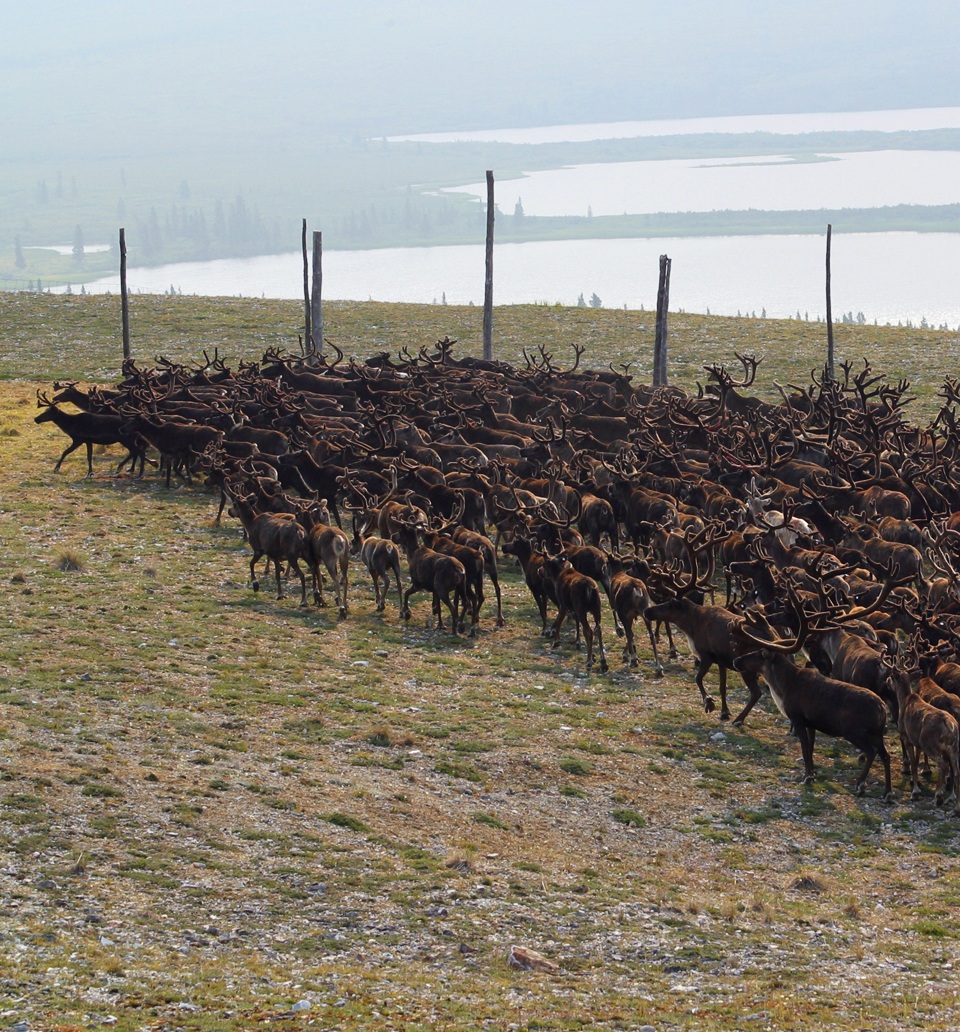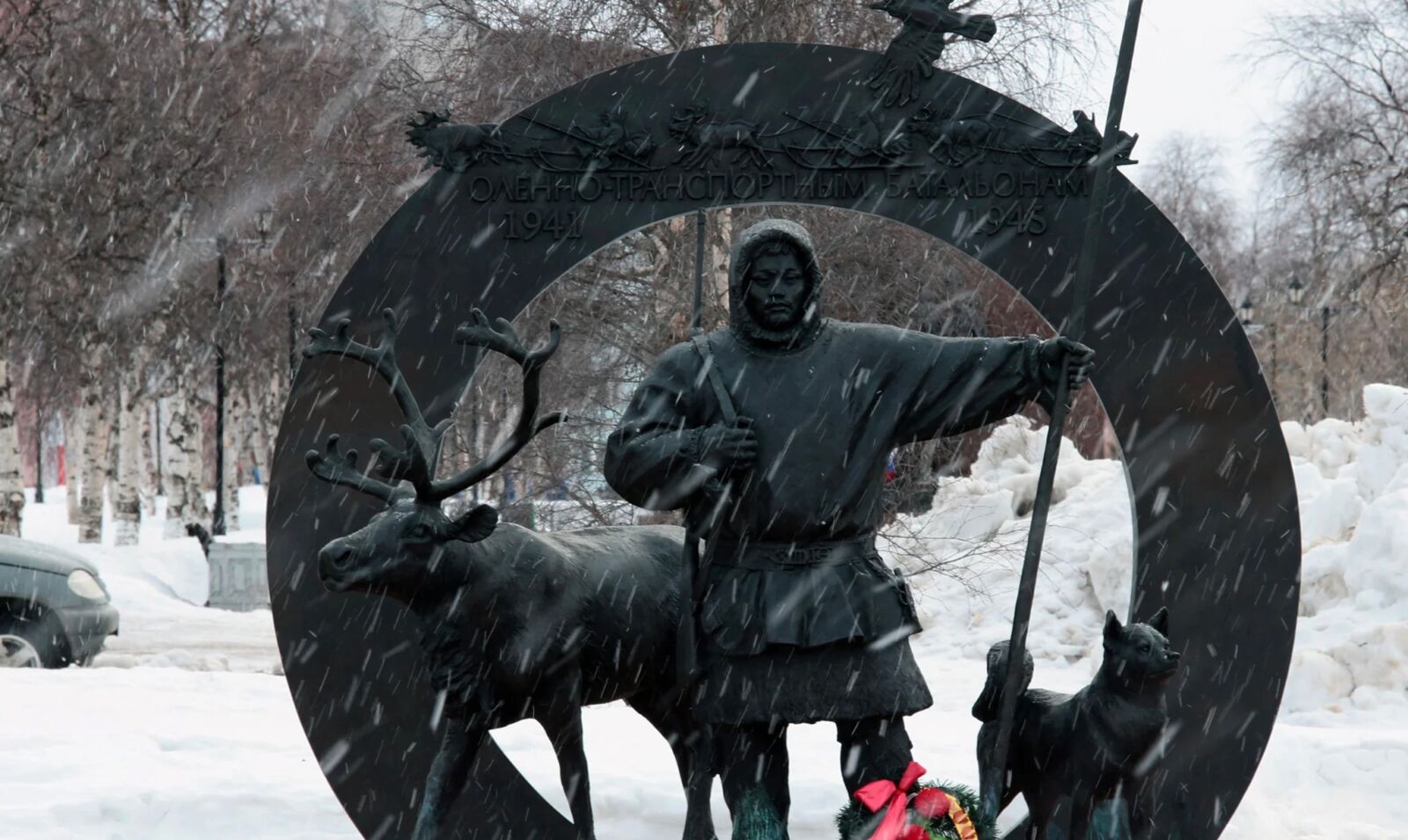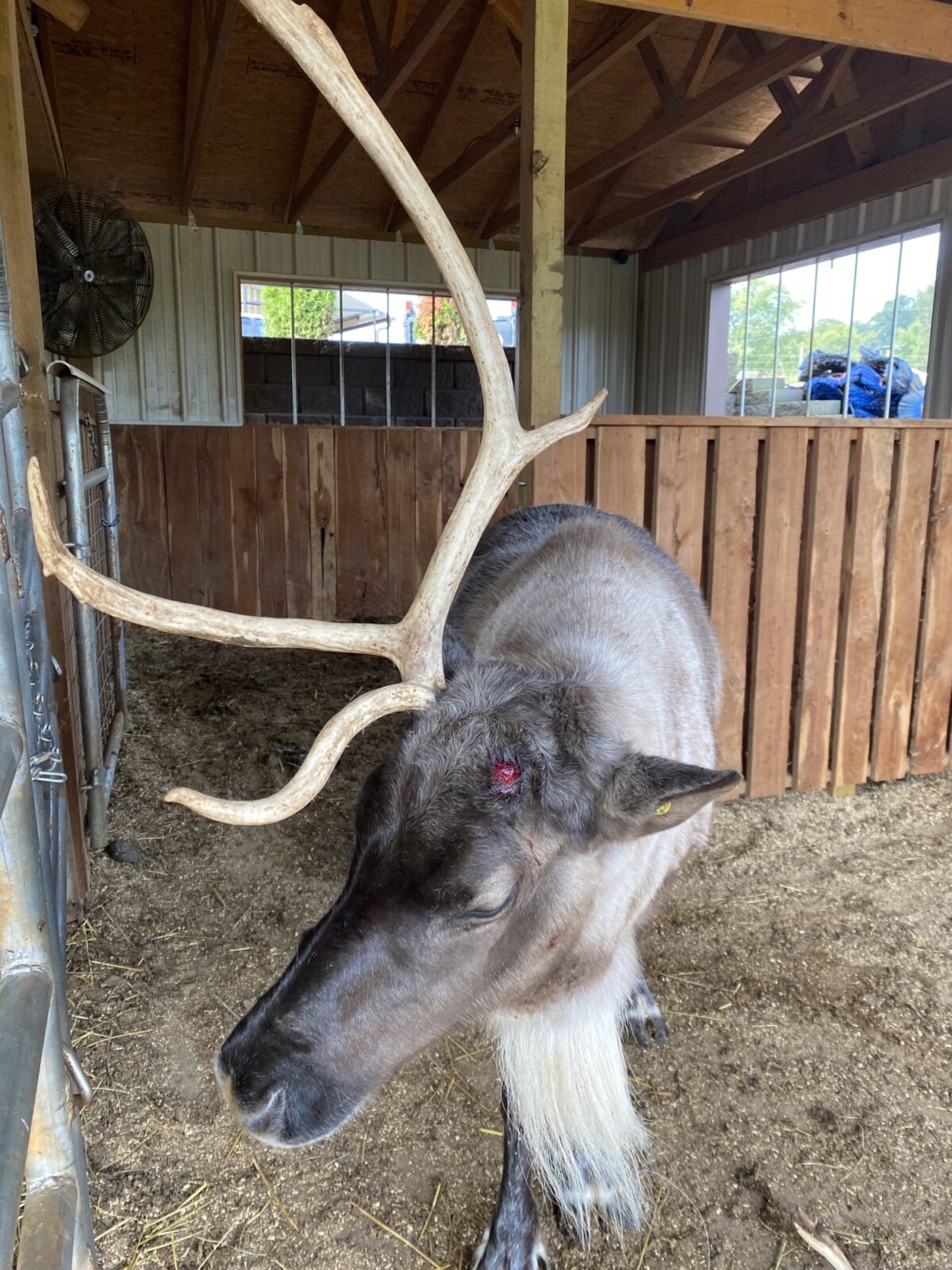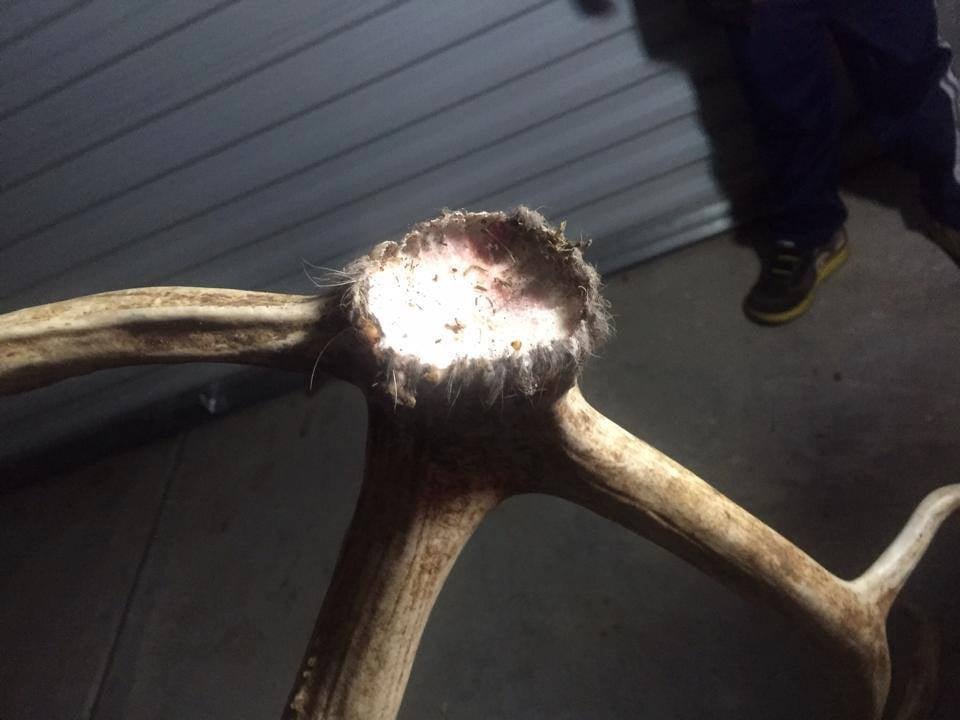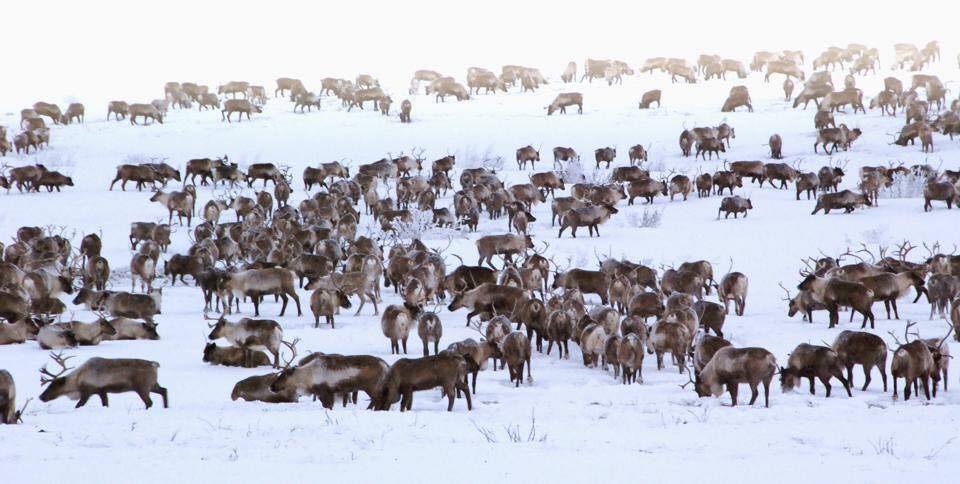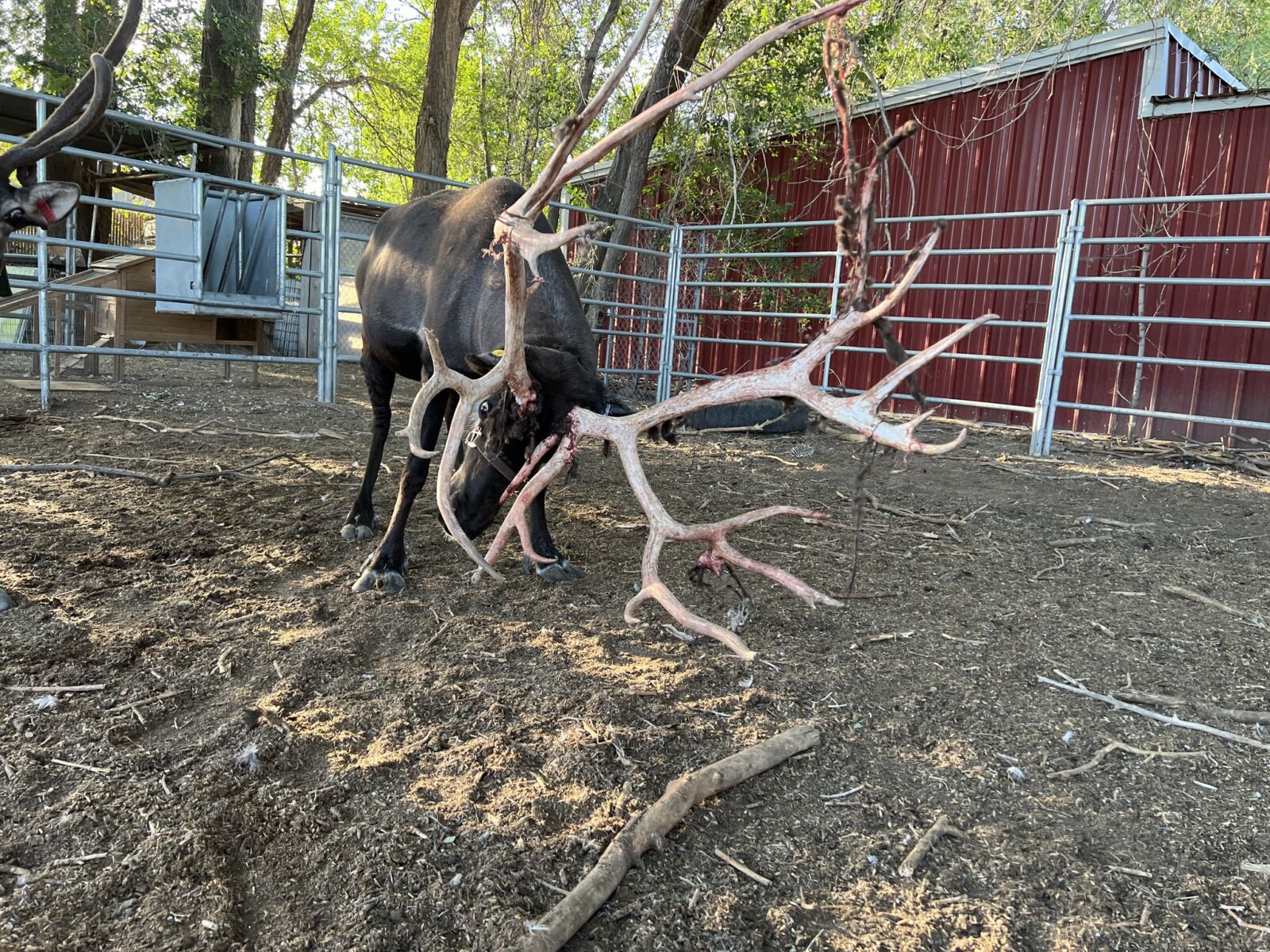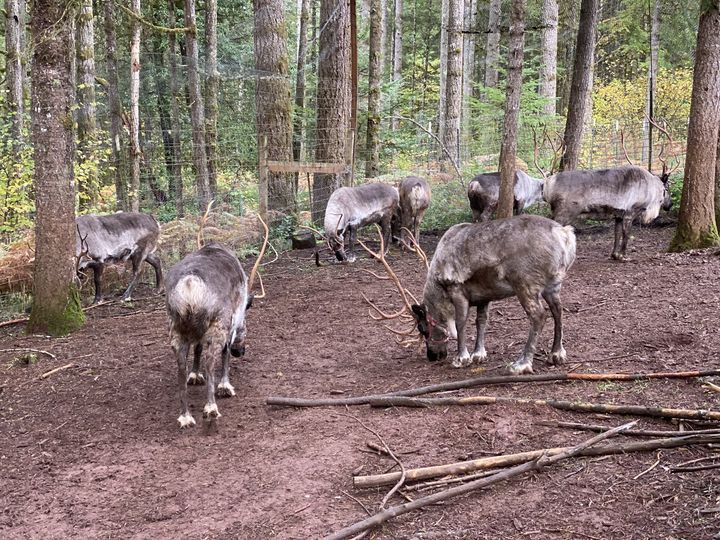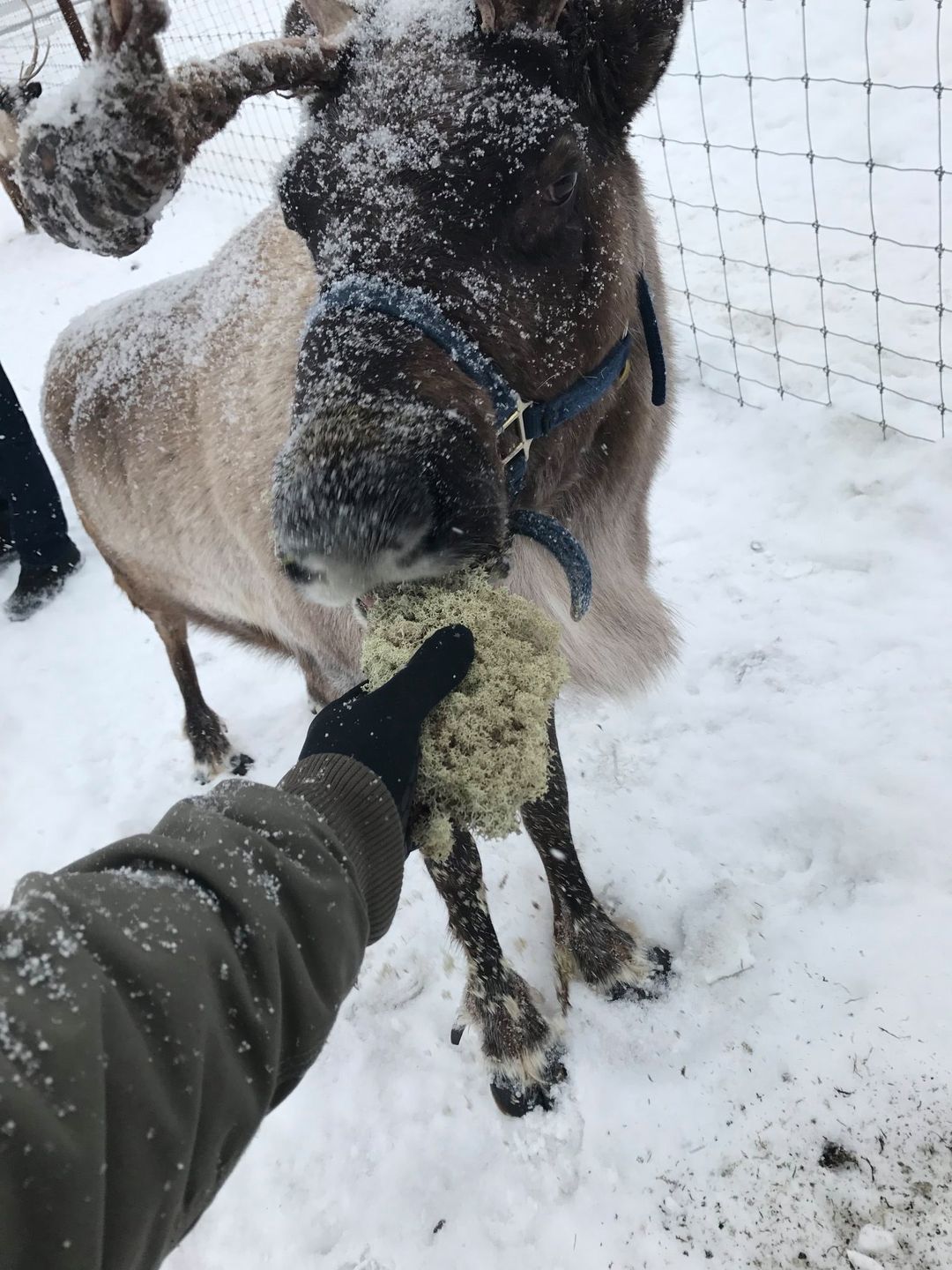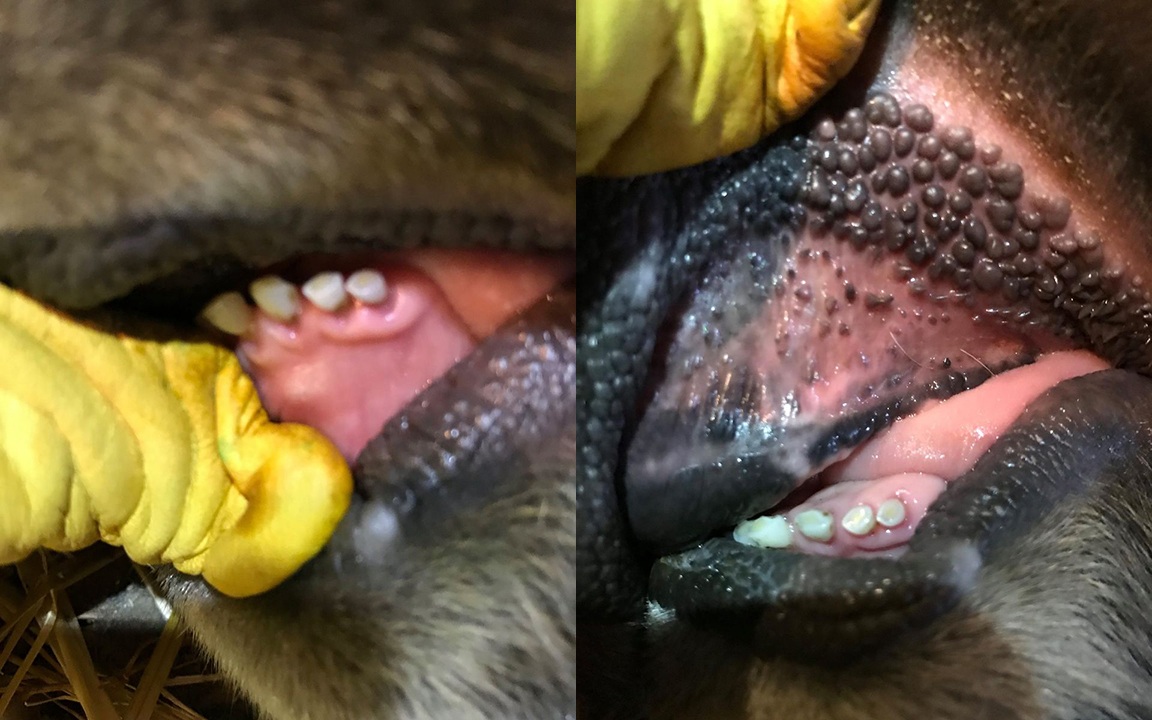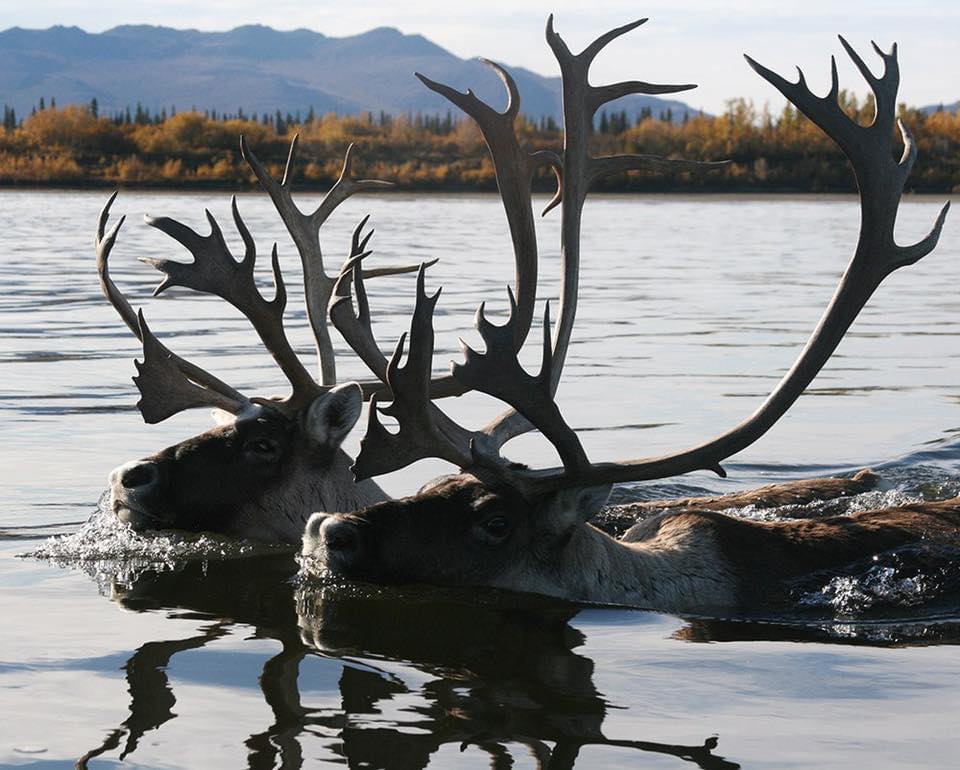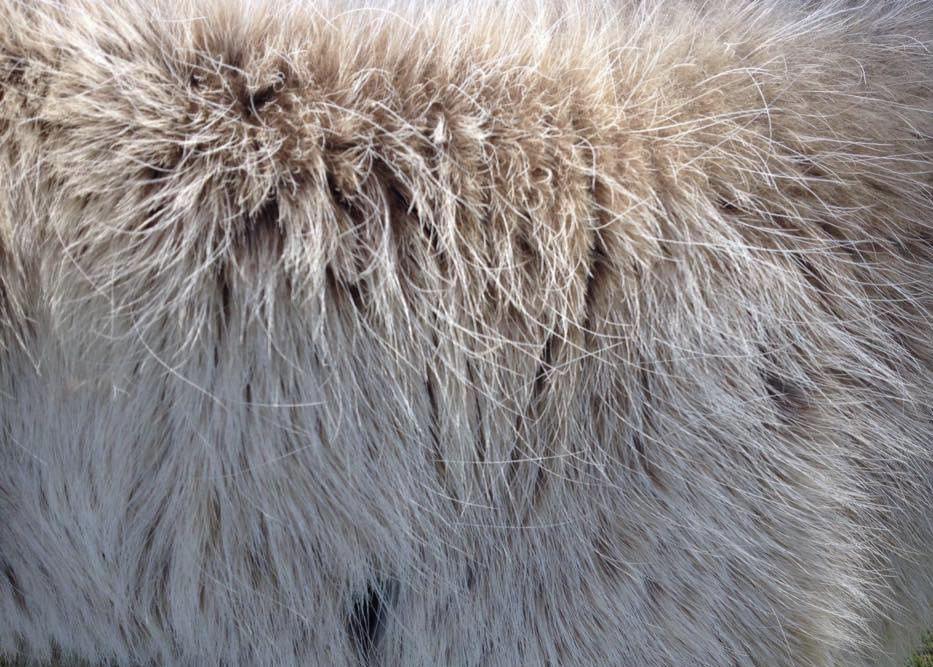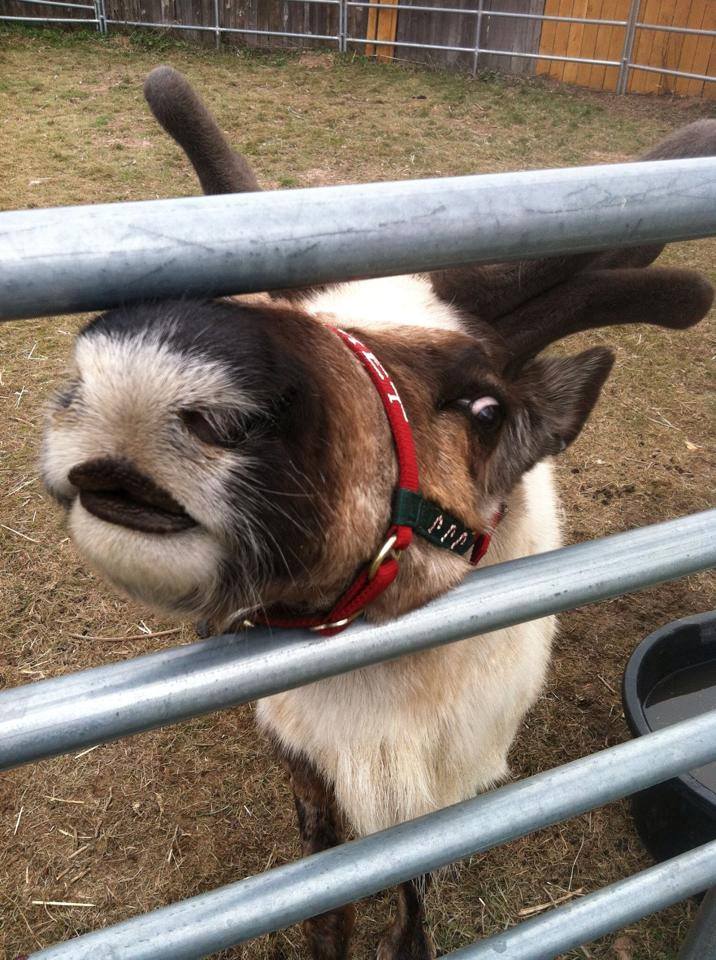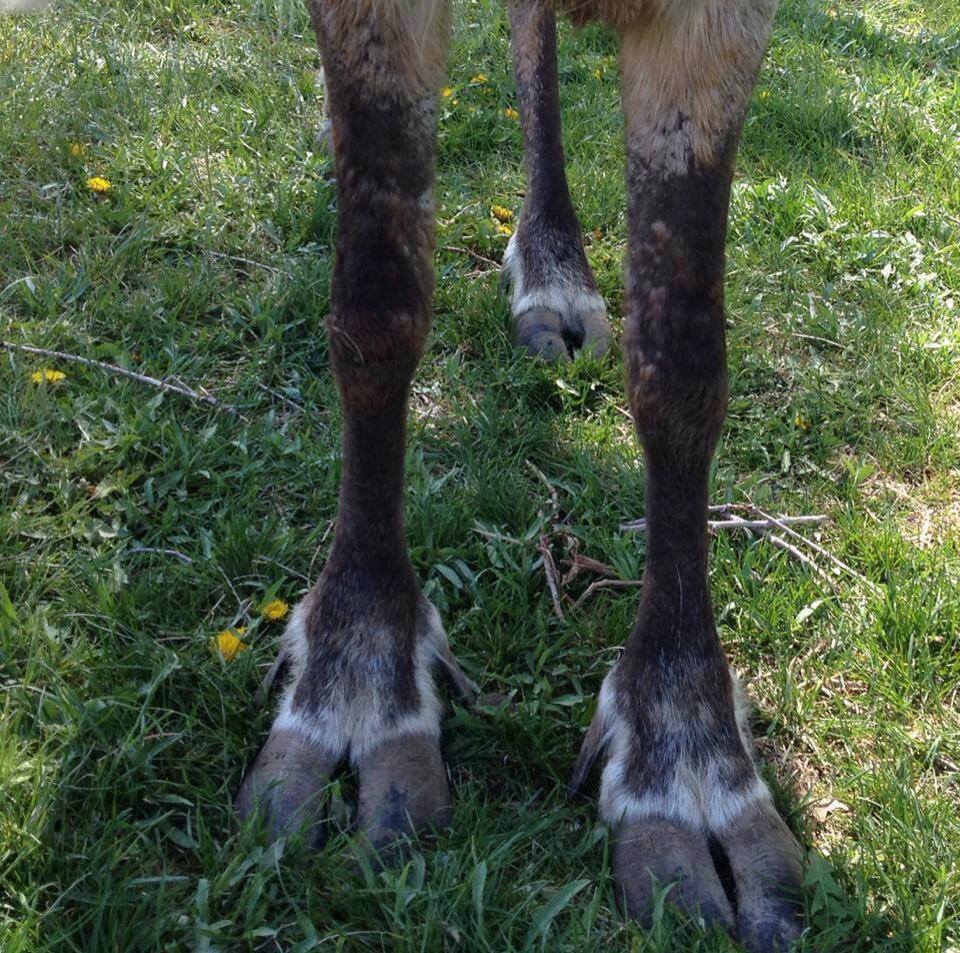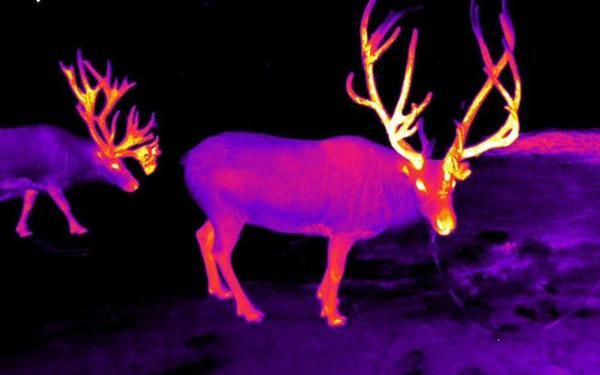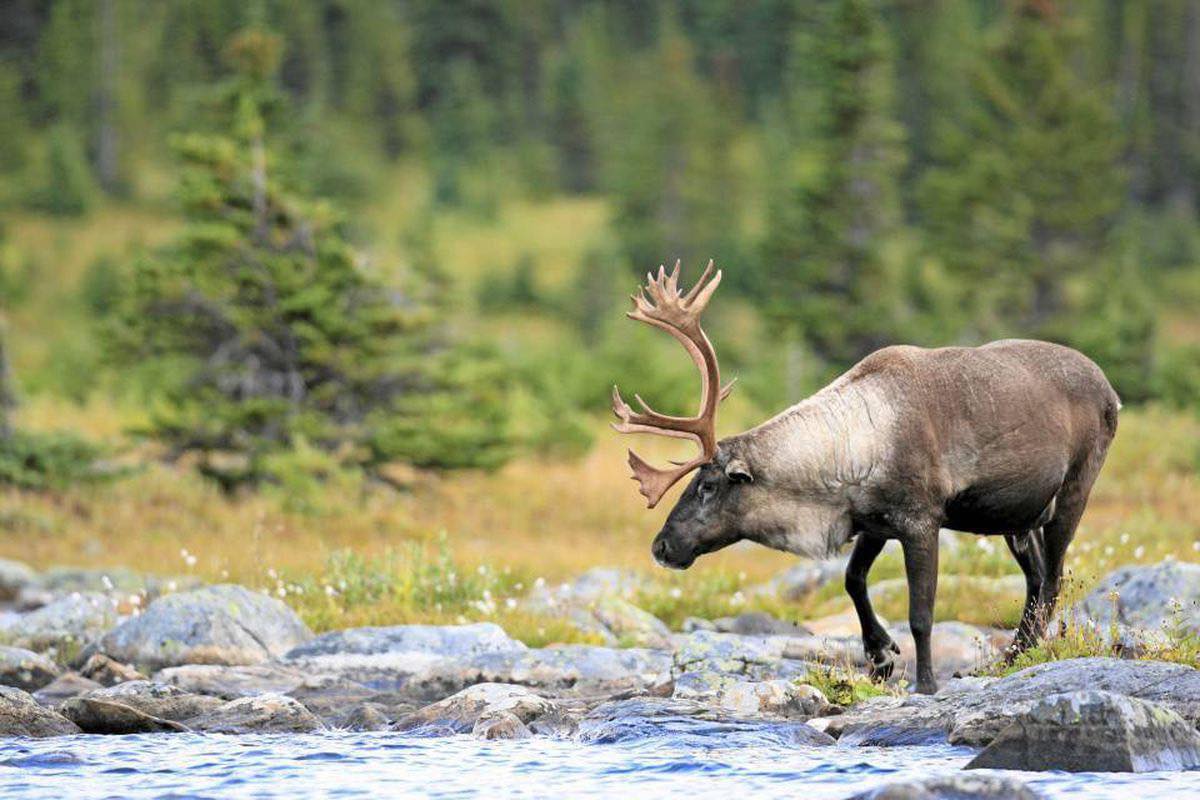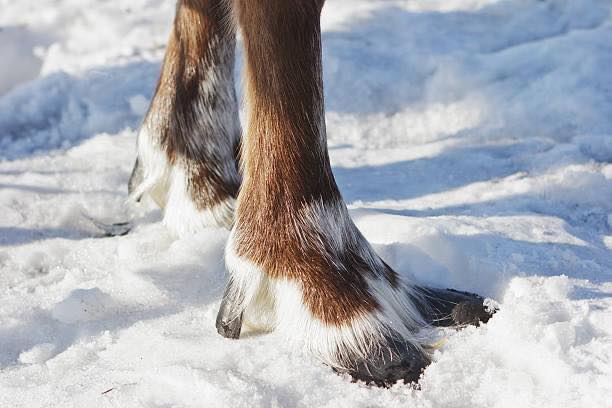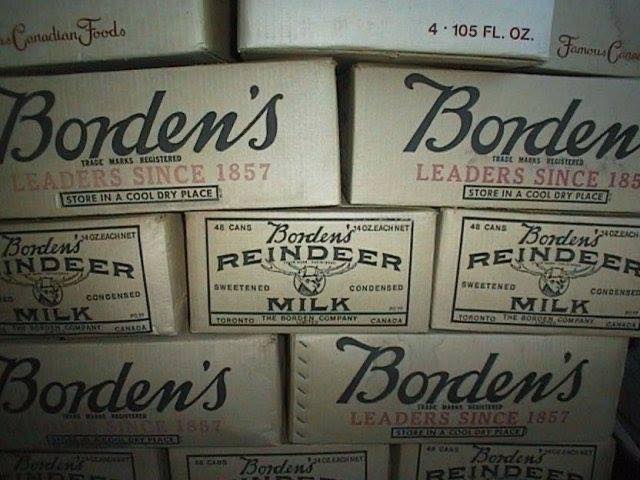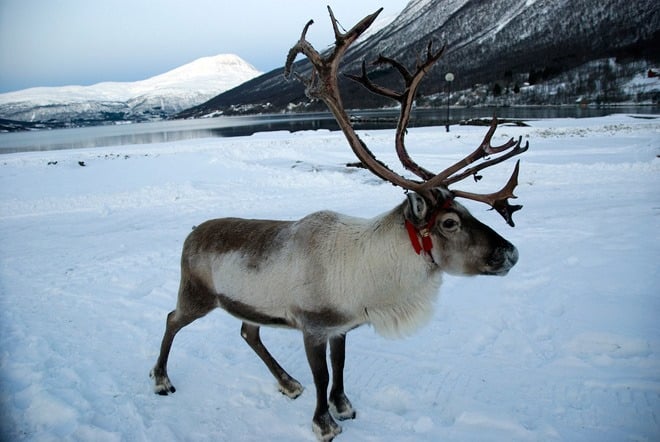About Reindeer
Reindeer first arrived in Alaska in 1892 by boat. Unlike their wild caribou cousins, they did not cross the land bridge. They were shipped from Siberia. Their peak populations reached 640,000 animals during the 1930’s. Only 20,000 live in Alaska today. Pictured is an Alaska reindeer herd circa 1920.
Reprinted with permission of Dr. N. Isaac Bott, DVM
Both male and female reindeer grow antlers each year that are deciduous (fall off every year), solid antlers emanating from pedicles (permanent bases) on the frontal bones of the skull. As they are growing, the antlers are soft, rubbery, and the living mass of blood and marrow is covered with a furry skin. The antlers grow rapidly and during this period the reindeer are said to be “in velvet”. When the antlers are finished growing usually some time in August, they harden, and the “velvet” is vigorously rubbed off.
The reindeer rut (breeding season) has a very intense and rapid onset. The massive 400+ inch antlers have grown over the past several months at an astounding rate of 1-2” of growth per day. They are among the fastest growing tissues in the animal kingdom. The blood supply is tremendous and heat can be felt when touching the massive antlers. This blood supply gradually decreases as the antlers reach their full size. The antlers harden once the growth is complete typically by the first week of September.
Abruptly, the males aggressively rub their massive racks on anything in their way. All of the velvet is rubbed off within a 12 hour period. Although fresh blood is noted on the antlers as the velvet comes off, the condition is NOT PAINFUL. There is no sensation in the antlers at this point. The normally docile bulls become very dangerous and deadly and cannot be trusted until their antlers fall off just before Christmas. The bulls then begin to rut, exhibiting neck swelling, enlarged tear ducts, and aggression (remember, they are animals, keep safety in mind). Rutting males become protective of the females in the herd, and the breeding season of several months begins.
Reprinted with permission of Dr. N. Isaac Bott, DVM
Reindeer are believed by many to be the first domesticated animals with a written reference to herding in a 9th century letter from Norway’s King Ottar to Alfred the Great which mentioned his fine herd of over 600 reindeer.
Farm raised reindeer are curious, friendly, likeable animals. They are easy to fence, feed and train to pull. Exhibition at Christmas and brood stock sales make them profitable, too! Reindeer do not require large areas or facilities. They can thrive on commercial feeds and are now raised successfully in most parts of the USA, including, as far south as Texas, Mississippi, and Tennessee.
Procedures have been tried and proven successful in raising reindeer in these diverse areas. Feed formulas are available, and training tips can be provided by various members who exhibit reindeer. A list of breeders and owners of reindeer that are for sale is continually updated, as well as a reference list of husbandry articles, circulars and university publications.
Reindeer (Rangifer tarandus) are the only deer species in which both the males and females grow antlers. Even calves grow antlers during their first year! Antlers, by definition, are shed and re-grown every year. Bulls lose their antlers during the winter, typically around Christmas time. Non-pregnant females will also lose their antlers during the winter. With caribou, pregnant females will not typically drop their antlers until they give birth in the spring. Because animals with antlers are dominant over those without, this adaptation allows a pregnant female to protect her food resources during scarce winter conditions, ensuring adequate nutrition for the continued development of her fetus.
Reprinted with permission of Dr. N. Isaac Bott, DVM
Reindeer antler sheds are unique. Other cervids, such as deer and elk, have a convex base that leaves a temporary indentation in the skull. Reindeer have a concave antler base. Antler pedicles are visible immediately after shedding.
Reprinted with permission of Dr. N. Isaac Bott, DVM
Reindeer are much more sedentary than caribou. While they do exhibit seasonal grazing patterns, their movements remain primarily within a well established home range. Reindeer tend to have a more robust body shape, with shorter legs and a flatter face. When herded, reindeer gather together into a cohesive unit instead of spreading out. It is interesting to note that just one or two caribou in a reindeer herd will cause the entire herd to behave more erratically and scatter.
Reprinted with permission of Dr. N. Isaac Bott, DVM
The reindeer rut (breeding season) has a very intense and rapid onset. The massive 400+ inch antlers have grown over the past several months at an astounding rate of 1-2” of growth per day. They are among the fastest growing tissues in the animal kingdom. The blood supply is tremendous and heat can be felt when touching the massive antlers. This blood supply gradually decreases as the antlers reach their full size. The antlers harden once the growth is complete typically by the first week of September. Abruptly, the males aggressively rub their massive racks on anything in their way. All of the velvet is rubbed off within a 12 hour period. Although fresh blood is noted on the antlers as the velvet comes off, the condition is NOT PAINFUL. There is no sensation in the antlers at this point. The normally docile bulls become very dangerous and deadly and cannot be trusted until their antlers fall off just before Christmas.
Reprinted with permission of Dr. N. Isaac Bott, DVM
In reindeer, there is a negative correlation between breeding date and gestation length. This means that the later in the season a female is bred, the shorter her gestation length. This phenomenon creates synchrony of parturition among the herd and thus fewer calves are lost to predation. A similar physiological adaptation exists in alpacas and wildebeest. Pictured are female reindeer from Timberview reindeer farm near Springfield, OR.
Reprinted with permission of Dr. N. Isaac Bott, DVM
Reprinted with permission of Dr. N. Isaac Bott, DVM
The inside of a reindeer’s mouth is very unique. They have no upper front teeth or incisors. Instead, they have a modified hard palate and incisors in the front of the lower jaw which are used to nip and tear at plants while feeding. In the rear of the mouth (on both top and bottom) are large molars. Molars are important in grinding and crushing food to make it more digestible. The soft tissue projections inside the lips are called papillae. They help move food to the back of the mouth where it can be properly ground and chewed.
Reprinted with permission of Dr. N. Isaac Bott, DVM
A swimming reindeer seems to ‘ride high’ on the water. This results from the great buoyancy imparted by the air trapped within the hollow guard hairs. Reindeer are known to be great swimmers and will cross wide rivers and lakes during their annual migrations
Reprinted with permission of Dr. N. Isaac Bott, DVM
A reindeer’s (Rangifer tarandus) hair coat is thick! In fact, they have up to 3,000-5,000 hairs per square inch of their body. Here is a close up of a massive winter coat.
Reprinted with permission of Dr. N. Isaac Bott, DVM
Hairs on the face of a reindeer extend down to and almost completely cover the lips. This protects the muzzle from frostbite during winter when reindeer obtain their daily food as frozen vegetation from beneath the snow. The lips of a reindeer are very fleshy and mobilewhich facilitates the harvesting of northern food plants such as lichens, grasses, and willow shrubs.
Reprinted with permission of Dr. N. Isaac Bott, DVM
Reindeer have very little hair on their legs compared to the rest of their body. Reindeer have the ability to cool down their limbs; in other words, when the weather is very cold (about – 30 F) the deer doesn’t spend much heat and energy keeping its lower legs warm. Instead, the temperature in the lower legs is allowed to go down to about 33 F, just above freezing, while the chest and abdomen are still kept at the normal body temperature of 101.5 F. Leg temperature is lowered by the tightening, or constriction, of the blood vessels feeding the legs. In this way, very little warm blood can flow down into the legs. Most of the reindeer’s muscles are up high in the body where they will stay warm and functional. The lower legs and hooves are primarily tendons and ligaments. These can continue to function at low temperatures, and cool leg temperatures have little effect on the reindeer’s ability to run.
Reprinted with permission of Dr. N. Isaac Bott, DVM
Reprinted with permission of Dr. N. Isaac Bott, DVM
Reprinted with permission of Dr. N. Isaac Bott, DVM
Broad hooves and dewclaws act as snowshoes and thereby enable the reindeer to travel more easily across deep snow. Other members of the deer family generally have small pointed hooves and, because they are not able to travel freely, may become restricted to small grazing areas called ‘yards’ when snowfalls are heavy. Researchers have found that reindeer can dig feeding craters when snow is as deep as 3 feet. Their shovel-like hooves also enable the reindeer to chip through hard and crusted snow.
Reprinted with permission of Dr. N. Isaac Bott, DVM
Reprinted with permission of Dr. N. Isaac Bott, DVM
Gestation is about 224 days. The calves are usually single births with that flurry of activity beginning in April. Twin births are extremely rare in reindeer. The calves are up nursing and walking very quickly, normally in less than an hour. They weigh between 8 to 14 pounds at birth, grow rapidly and some can easily weigh 90 pounds when they are 4 months old. At that time, they have already grown their first set of “Rudolph” antlers.
We recommend talking with ROBA members about these fine animals before you make any purchase.
Reprinted with permission of Dr. N. Isaac Bott, DVM
Reprinted with permission of Dr. N. Isaac Bott, DVM
You should be aware of individual state laws and regulations concerning ownership and responsibilities, importation, fencing requirements, herd certification, etc. Contact ROBA for information on members within your area. They can be very helpful in getting you started.
The purchase of young, farm raised animals, started on feeds that are available in your location is a good option for the new owner. Young animals are easy to handle and train. You can see the herd they came from, investigate the health status of that herd and make an informed decision based upon personal observation. Ask if the reindeer herd is a certified TB-free herd or is in the certification process and request to see herd health papers.
All reputable breeders are proud of their herd’s health status and will show a prospective buyer that information. Ask for the names and addresses of persons who have previously purchased reindeer from the seller and don’t be afraid to ask questions.
If you are interested in reindeer, ROBA is the group of dedicated people in the reindeer breeding program for you. No matter what your reason for having them may be, reindeer raising can be fun and profitable too. Just ask anyone who owns them!
For more information, please follow this link to the University of Alaska Reindeer Research Program
